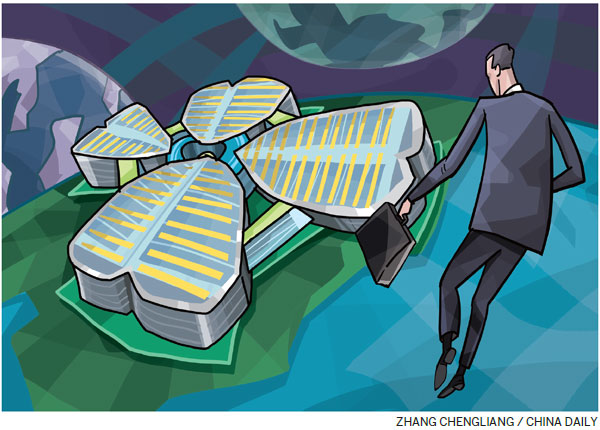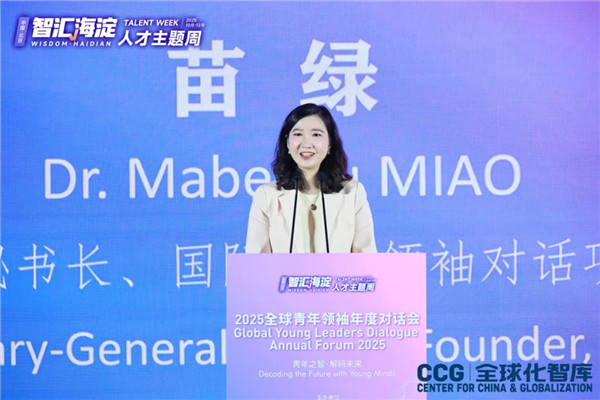Wang huiyao: Import expo marks new economic era
November 01 , 2018promote the upcoming China International Import Expo in Pudong New Area, Shanghai, on Oct 11. Zhou Dongchao / For China Daily
By Wang Huiyao, president of the Center for China and Globalization(CCG)
All eyes will be on Shanghai this month for the first China International Import Expo, from Nov 5 to 10. With more than 2,800 companies from over 130 countries participating, it is set to be a truly global event that will boost trade connectivity and open new channels for cross-border cooperation.
Announced by President Xi Jinping last year, the CIIE is part of China’s broader efforts to open up markets and facilitate the importing of more high-quality products to meet domestic demand. The event will give companies a chance to exhibit products and for countries to showcase goods through national pavilions. It also will provide a platform for exporters to learn more about China’s policies and markets and to conduct trade promotion, promising great benefits for foreign companies and Chinese consumers alike.
For foreign companies yet to gain a foothold in China, the event offers a springboard into the domestic market by presenting goods to a broad audience and making connections with key industry players. For companies already established in China, the expo is a way to ensure continued expansion by introducing new brands, products and concepts to China, Asia and the world. For Chinese buyers and consumers, the expo will provide a unique channel to learn about diverse choices available from around the world.
Moving forward, the CIIE is set to become an important annual fixture to promote trade between China and the world, linking overseas companies and producers with consumers in China and beyond.
The CIIE is the latest in a succession of high-profile international events that China has launched over the years that mirror the phases of its economic development.

In 1957, the Canton Fair was launched to promote the exporting of Chinese-made goods overseas. It continues to be the oldest and largest trade fair in China. In 1997, the China International Fair for Investment and Trade was launched in Xiamen, reflecting the emphasis put on attracting inward investment at that time.
Four decades after the launch of the reform and opening-up policy, the import expo represents yet another landmark in the evolution of China’s economic development and shifting orientation, from exports to investment to imports.
While China was once renowned as the “factory of the world”, today the growth of China’s consumer spending and the evolving tastes of its middle class have become a major force fueling the global economy. This rise in consumer spending is an integral part of China’s ongoing development process, reflecting the shift away from an export-oriented, investment-driven growth model to one that is fueled by consumption.
Consumption drove almost 80 percent of GDP growth in the first half of this year, and China is already the world’s second-largest importer, with $1.84 trillion (1.6 trillion euros; £1.4 trillion) worth of imports in 2017. According to the Ministry of Commerce, China is set to import products and services worth more than $10 trillion over the next five years, representing massive opportunities for foreign exporters. The upcoming expo is a good chance for China to further boost imports and domestic consumption, contributing to the ongoing transformation and restructuring of the Chinese economy.
Naturally, foreign companies have been lining up to take advantage of this vast and growing market. However, they face a more challenging competitive landscape than in years gone by, when any foreign brand in China carried a certain amount of cachet. Increasingly, simply being foreign is no longer enough to appeal to China’s ever more discerning consumers.
This is particularly so given the rise of a new generation of innovative domestic brands that have closed the quality gap with their foreign counterparts and in many cases surpassed them. These domestic brands are rapidly changing the image of “made in China”, offering a range of quality goods tailored to local consumers, often through digitally driven retail and service models. In this more competitive environment, foreign companies must strengthen their understanding of China’s rapidly changing market and leverage core advantages if they are to win the hearts of Chinese consumers.
It’s also a good opportunity for foreign brands to localize their businesses by cooperating with their Chinese partners or learning from their Chinese competitors. For Chinese companies, it’s a good chance to learn from multinational corporations and facilitate their outbound business expansion.
As well as providing a practical platform to match foreign companies with market opportunities in China, the CIIE sends a strong message that China is open for business and committed to upholding globalization and free trade.
This is particularly important at a time when the multilateral trading system is challenged and protectionism is on the rise. Unfortunately, China and the United States find themselves locked in a trade dispute that harms not only both countries but also the wider global economy. This situation has arisen in part from a misguided view of international trade as a zero-sum game, a perspective that fails to reflect the realities of the 21st-century global economy.
By throwing open its doors to foreign exporters, the CIIE affirms China’s embrace of trade as a positive force that can create benefits for workers and consumers in all countries. Amid ongoing Sino-US trade friction, it is encouraging to see that nearly 180 US companies have signed up to participate in the CIIE, including leaders from a range of sectors including high-end manufacturing, intelligent equipment, home appliances, culture and sports. The CIIE provides a clear signal that China is willing to increase its imports and it’s an opportunity for the US business community to tap new market opportunities and forge deeper links with China.
We do hope this expo will play a role in bridging the Sino-US gap and contribute to the solution that both China and the US are seeking to reach.
In addition to industry leaders from developed markets, it is promising to see that the expo will feature many participants from developing countries, especially those with links to the Belt and Road Initiative, including more than 100 companies from over 30 African countries.
For example, a dozen companies from Brazil’s coffee sector will feature gourmet lines at the expo, seeking to tap China’s growing thirst for coffee. Wineries from African countries, such as Morocco and South Africa, are also planning to use the expo to enter China and connect with its growing middle class. Preferential policies have also been implemented to help small and medium-sized enterprises from Africa participate in the expo. Once such companies establish trade flows to China, they can also use the country as a steppingstone to other Asian markets.
By providing exposure for products and regions around the world, the CIIE offers a platform through which all countries can leverage their own strengths and deepen economic relations, contributing to domestic growth, increased trade and greater global prosperity.
The CIIE can thus demonstrate that China would like to shoulder more responsibility to brace up the global economy, which is gloomy due to sluggish trade and investment circumstances. With the spirit of inclusive development and win-win, the expo will bring more opportunities not only for the companies but for world trade.

Dr. Wang Huiyao, founder and president of the Center for China and Globalization(CCG), an independent think tank based in Beijing.
Topical News See more






